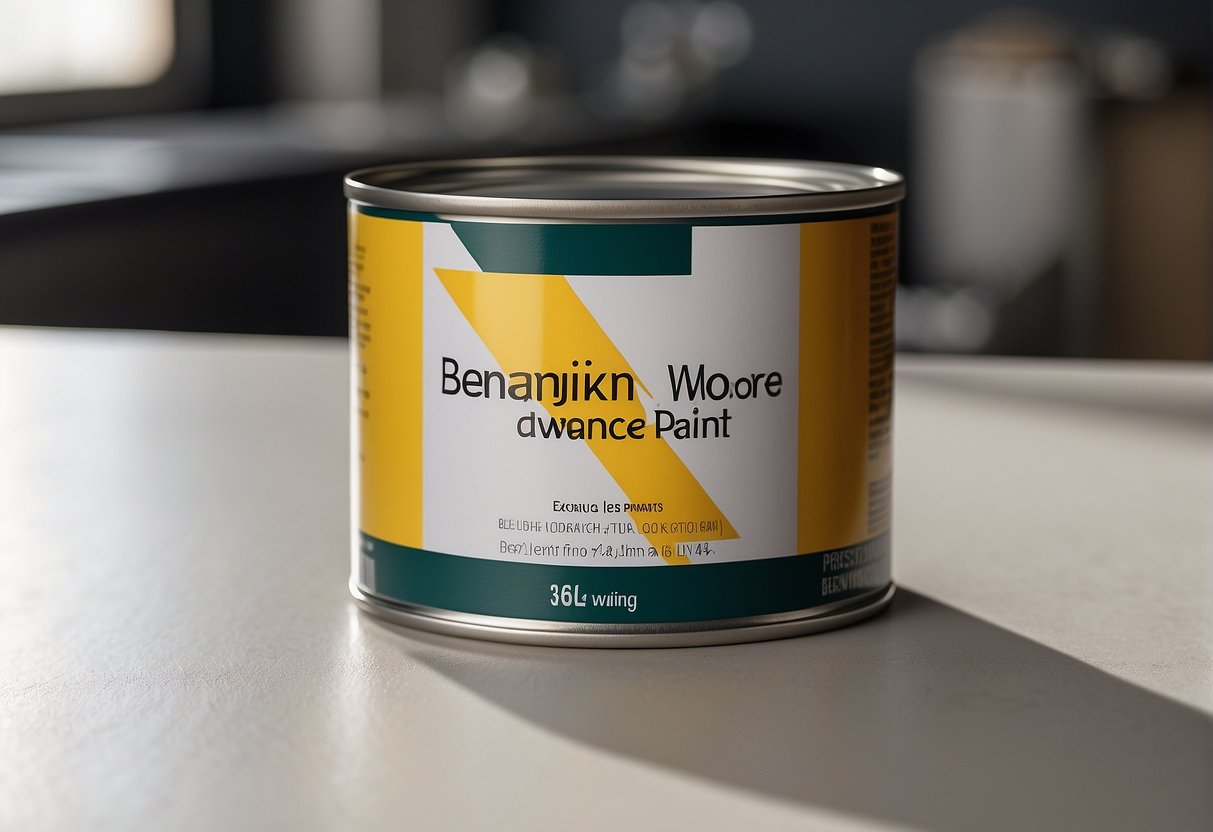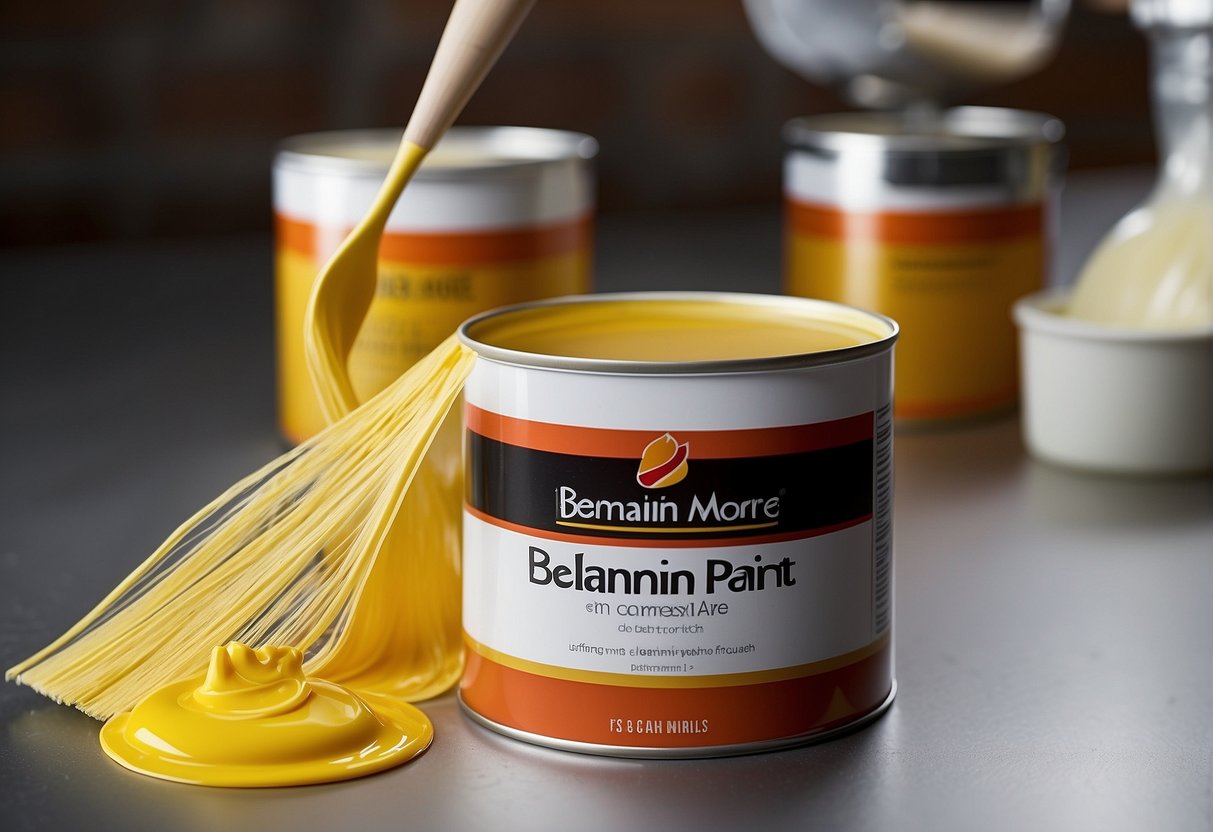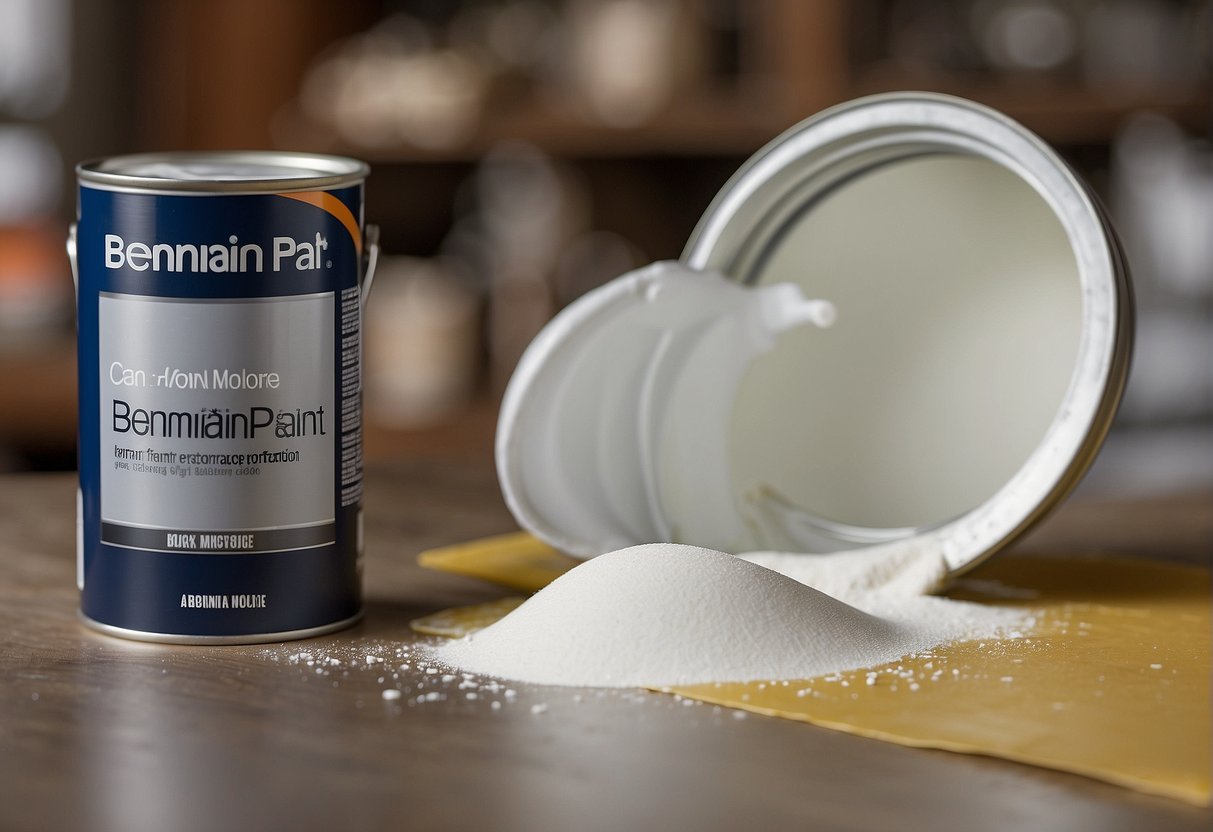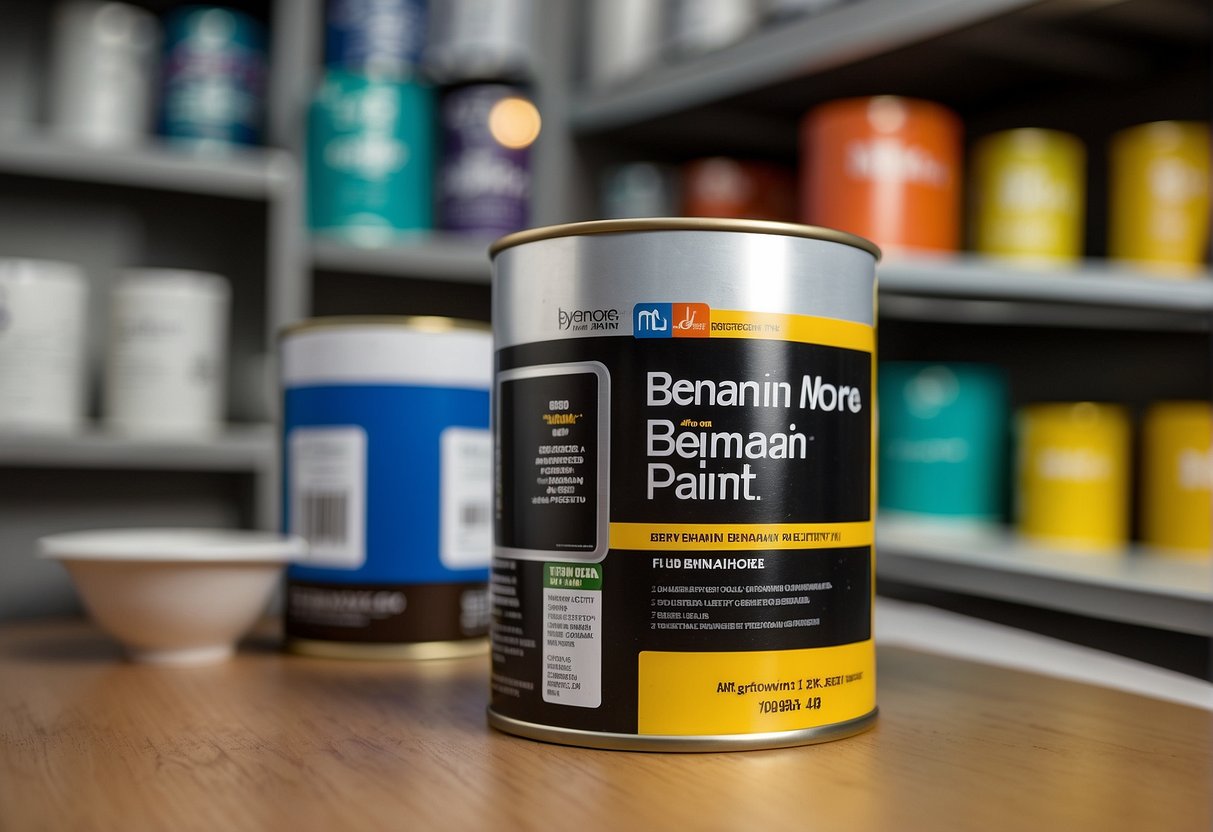As a professional painter, I have seen several instances where the white paint on kitchen cabinets, trim, and doors turns yellow over time, which can be frustrating for homeowners who have invested time and money into their home’s aesthetics. One of the most popular paints for cabinets and trim is Benjamin Moore Advance, which is known for its durability and smooth finish. However, many people have reported issues with yellowing, leading to questions about the causes and prevention of this problem.
In this article, I will provide an overview of Benjamin Moore Advance paint, including its properties, preparation, application, curing, and recoating. I will also discuss the issue of yellowing and provide tips for preventing and maintaining the paint’s appearance. Additionally, I will answer some frequently asked questions about this paint to help you make an informed decision about using it in your home.
Key Takeaways
- Benjamin Moore Advance is a popular paint for cabinets and trim due to its durability and smooth finish.
- Yellowing is a common issue with this paint, caused by a variety of factors including moisture and lack of light.
- To prevent yellowing and maintain the paint’s appearance, proper preparation, application, and maintenance are crucial.
Overview of Benjamin Moore Advance Paint
Benjamin Moore Advance Paint is a waterborne alkyd paint that combines the benefits of both water-based and oil-based paints. It is a premium quality paint that provides a durable, smooth, and long-lasting finish. The low VOC (volatile organic compounds) formula makes it an eco-friendly option that is safe for the environment.
Composition and Benefits
Benjamin Moore Advance Paint is made up of a unique formula that combines the best features of traditional oil and water-based paints. The waterborne alkyd formula provides the durability and smooth finish of oil-based paints and the easy application and cleanup of water-based paints.
The paint also has a low odor and low VOC content, making it an ideal option for those who are sensitive to strong paint smells. The low VOC content also makes it an environmentally friendly option that is safe for use in homes and other indoor environments.
Application Techniques
Benjamin Moore Advance Paint can be applied using a variety of techniques, including brush, roller, or spray. It is recommended to use a high-quality synthetic brush or roller for the best results.
Before application, the surface should be clean, dry, and free of any dirt or debris. The paint dries quickly, so it is important to work in small sections to avoid visible brush or roller marks.
In conclusion, Benjamin Moore Advance Paint is a premium quality waterborne alkyd paint that provides a durable, smooth, and long-lasting finish. Its low VOC content and eco-friendly formula make it a safe and environmentally friendly option for use in homes and other indoor environments.
Preparation and Priming
Before painting with Benjamin Moore Advance, proper preparation and priming are important for ensuring a successful and long-lasting finish. In this section, I will discuss the surface preparation and primer selection and application.
Surface Preparation
Proper surface preparation is essential for achieving good adhesion and a smooth finish. The surface must be clean, dry, and free of any contaminants such as dirt, dust, grease, or oil. Any loose or flaking paint should be removed by sanding or scraping. If the surface is glossy, it should be sanded to roughen it up and provide a better surface for the primer to adhere to.
Primer Selection and Application
Choosing the right primer is crucial for ensuring good adhesion and preventing yellowing. For best results, use a high-quality primer that is specifically formulated for the surface you are painting. Benjamin Moore Advance has its own line of primers that are designed to work with the paint.
When applying the primer, follow the manufacturer’s instructions carefully. Use a high-quality brush or roller to apply the primer in thin, even coats. Allow the primer to dry completely before applying the topcoat.
In conclusion, proper surface preparation and primer selection and application are essential for ensuring a high-quality finish with Benjamin Moore Advance paint. By following these steps, you can ensure good adhesion and prevent yellowing, resulting in a beautiful, long-lasting finish.
Application Methods
When it comes to applying Benjamin Moore Advance paint, there are two primary methods: brushing and rolling, and spraying with an HVLP sprayer. Each method has its advantages and disadvantages, and the choice ultimately depends on your preferences and the project requirements.
Brushing and Rolling
Brushing and rolling is the traditional method of applying paint and is suitable for most projects. It is especially useful for painting small areas or surfaces with lots of detail, such as cabinets and trim. When using this method, it is essential to use a high-quality brush and roller to ensure a smooth and even finish.
Here are some tips to get the best results when brushing and rolling:
- Use a high-quality synthetic brush and roller.
- Apply the paint in thin coats to avoid drips and runs.
- Use long, even strokes when brushing.
- Roll the paint in one direction to avoid roller marks.
- Allow each coat to dry completely before applying the next.
Spraying with HVLP Sprayer
Spraying with an HVLP sprayer is a faster and more efficient method of applying paint. It is ideal for painting large surfaces such as walls and ceilings. It is also useful for achieving a smooth and even finish on cabinets and trim.
Here are some tips to get the best results when spraying with an HVLP sprayer:
- Use a high-quality HVLP sprayer with a fine finish tip.
- Thin the paint according to the manufacturer’s instructions.
- Spray in a back-and-forth motion, overlapping each pass slightly.
- Hold the sprayer at a consistent distance from the surface.
- Apply thin coats to avoid drips and runs.
In summary, both brushing and rolling and spraying with an HVLP sprayer are effective methods of applying Benjamin Moore Advance paint. The choice depends on your preferences and the project requirements. By following the tips above, you can achieve a smooth and even finish regardless of the method you choose.
Curing and Recoating
As a professional painter, I have worked with Benjamin Moore Advance paint on various projects. One of the most common issues that customers face is yellowing of the paint over time. While there are several reasons why this can happen, one of the most important factors to consider is the curing and recoating process.
Drying Time and Conditions
The drying time of Benjamin Moore Advance paint is similar to traditional paint, and it is ready to touch after 4 to 6 hours. However, it is important to note that the recoat time is longer. According to paintsgeek.com, you must wait up to 16 hours before applying the second coat. This is because the paint dries by oxidation, which requires exposure to oxygen.
In addition to the drying time, it is important to consider the conditions in which the paint is applied. High humidity can prolong the drying time and affect the overall finish of the paint. To ensure the best results, it is recommended to apply the paint in a well-ventilated area with a humidity level below 50%.
Recoating Process
The recoating process is an important aspect to consider when using Benjamin Moore Advance paint. According to painttalk.com, the recoating process should be done between 16-24 hours after the first coat is applied. This allows the first coat to dry properly and ensures that the second coat adheres properly.
It is important to note that touch-ups should be done carefully. If touch-ups are done within the first 24 hours, it can affect the curing process and lead to uneven results. If touch-ups are necessary, it is recommended to wait at least 24 hours before applying another coat.
Overall, the curing and recoating process is crucial when using Benjamin Moore Advance paint. By following the recommended drying time, conditions, and recoating process, you can ensure a high-quality finish that is less likely to yellow over time.
Maintenance and Yellowing Prevention
As a professional painter, I have learned that maintenance is key to preventing yellowing of Benjamin Moore Advance paint. Here are some tips that can help you keep your paint looking fresh and new.
Regular Cleaning and Touch Up
Regular cleaning and touch-up can help prevent yellowing and keep your paint looking fresh. Dirt and grime can build up on painted surfaces, causing them to yellow over time. By cleaning your painted surfaces regularly, you can prevent the build-up of dirt and grime. Touching up areas that have become discolored or yellowed can also help prevent further yellowing.
Factors Contributing to Yellowing
There are several factors that can contribute to yellowing of Benjamin Moore Advance paint. Moisture is one of the most common causes of yellowing. Moisture can seep into the paint and cause it to discolor. To prevent this, make sure that the painted surfaces are completely dry before painting. Lack of ventilation can also contribute to yellowing. Painted surfaces that do not receive enough air circulation may develop a yellow tint over time.
Minimal yellowing can occur with Benjamin Moore Advance paint, but it can be prevented with proper maintenance. By regularly cleaning and touching up painted surfaces and being aware of the factors that contribute to yellowing, you can keep your paint looking fresh and new for years to come.
Frequently Asked Questions
What causes the yellowing of Benjamin Moore Advance paint over time?
Yellowing of Benjamin Moore Advance paint can be caused by several factors such as exposure to moisture, lack of ventilation, and insufficient access to light, both artificial and sunlight. Environmental factors can also contribute to yellowing, such as high humidity levels and temperature changes.
How do I prevent my satin Impervo finish from yellowing?
To prevent your satin Impervo finish from yellowing, ensure that the surface is clean and dry before application. It is also important to use a high-quality primer and paintbrushes to ensure even coverage. Additionally, avoid exposing the surface to excessive moisture and ensure proper ventilation.
Is there a difference in yellowing between Benjamin Moore Advance Urethane and other urethane paints?
Benjamin Moore Advance Urethane is a high-quality paint that is designed to resist yellowing. However, like all urethane paints, it can still yellow over time due to exposure to environmental factors. It is important to follow proper application techniques and maintenance to minimize yellowing.
Can chipping occur with Benjamin Moore Advance paint, and how can it be prevented?
Chipping can occur with Benjamin Moore Advance paint if the surface is not properly prepared or if the paint is applied too thinly. To prevent chipping, ensure that the surface is clean and dry before application. Use a high-quality primer and paintbrushes to ensure even coverage, and apply the paint in thin, even coats.
What is the full curing time for Benjamin Moore Advance paint?
The full curing time for Benjamin Moore Advance paint can vary depending on environmental factors such as temperature and humidity. However, in general, the paint should be dry to the touch within 4-6 hours and fully cured within 14 days.
How does Emerald Urethane Trim Enamel compare to oil-based paints in terms of yellowing?
Emerald Urethane Trim Enamel is a high-quality paint that is designed to resist yellowing. Unlike oil-based paints, it is low VOC and has a quick drying time. Additionally, it is easier to clean up with soap and water. Overall, Emerald Urethane Trim Enamel is a great alternative to oil-based paints for those looking to avoid yellowing.

Hi, I’m Sal Muller of Tooltrip.com. My DIY experience led me to understand essential power tools for home projects. Tooltrip.com guides enthusiasts and professionals in choosing right tools for any job. I provide concise top tool reviews for easier, efficient DIY.







